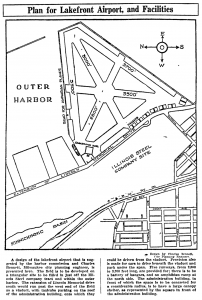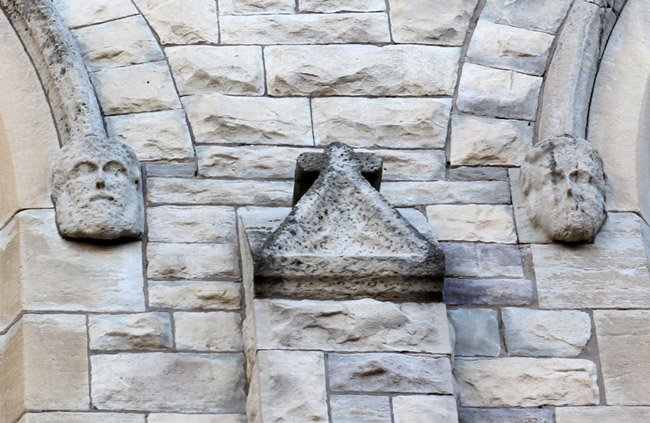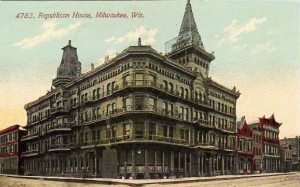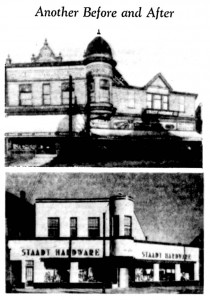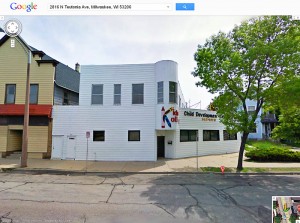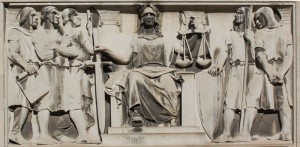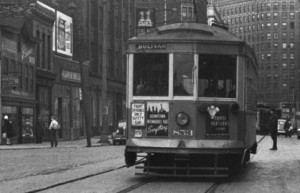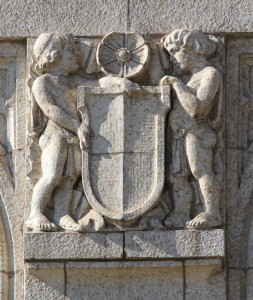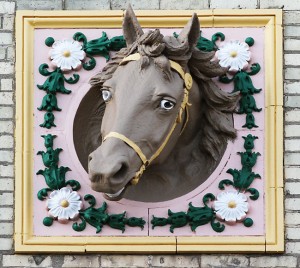This story from the Milwaukee Sentinel of December 3, 1930 tells about a down-on-his-luck Marquette senior that turned to armed robberies to fund his expenses.
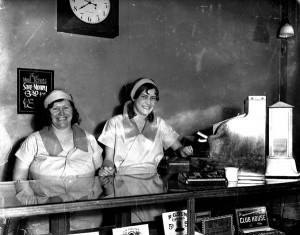
Alice Becker and Esther Burby - Because these restaurant workers didn't fear his pistol as much as other victims had, James Maher, Marquette university student, is in jail after a holdup Tuesday night. He fled when Alice approached him and was captured outside by a patrolman. It was his fourth holdup attempt, the Hilltop senior told police. Economic depression, he explained to police drove him to banditry.
Milwaukee Sentinel, December 3, 1930
TRAP MARQUETTE SENIOR IN FOURTH HOLDUP AFTER GIRL VICTIM GIVES ALARM
Advances on Gunman Robbing Restaurant, Causing Capture; Youth Admits Career of Crime.
A Marquette university senior’s career of banditry, staged to finance his last year at school and his graduation in June, ended abruptly Tuesday night when he was trapped through a girl’s bravery after an apparently successful holdup of the Civic Center restaurant, 1224 W. State st.
Screams of his two girl victims, sudden flight of the bandit with his loot, and his capture after a thrilling chase were highlights of the student’s fourth attempt to fatten his meager educational fund at the point of a revolver.
After it was over, James Maher, 23, Alpha Kappa Psi fraternity man and former Menominee, Mich., High School tennis star, sat in a central station cell, foresaw that prison walls would enclose him instead of a university auditorium at graduation time, and cheerfully admitted that “it doesn’t pay.”
Borrowing an overcoat from a fraternity brother at the chapter house, 199 Twenty-fifth st., the handsome young Maher strolled forth at 6 p. m. Tuesday for his fourth foray into criminal fields. He planned to hold up a Piggly Wiggly store on State st, he said, but as he arrived the clerks were closing and wouldn’t let him in.
Undaunted, he passed on a few doors and entered the Civic Center restaurant. Three previous holdups, all successful, had given him a professional slant on things; he eyed the eating house and found conditions favorable. Only Esther Burby, 19, of 760 N. Fifteenth st., cashier, and Alice Becker, 30, of 1405 Walnut st., waitress, were in the main room. Sam Poulos, chef, was in the kitchen.
Maher took a seat in a booth and ordered a 35-cent meal, which Miss Becker served. Finishing it leisurely, the student-bandit strode to the front, where he flipped out a revolver and pointed it at Miss Burby.
Orders Register Opened.
“Open the register,” he ordered, and she obeyed.
“Hand over the cash.” he next directed, and she gave him $37.
“Now pile up the silver for me,” said Maher, and it was here that his aplomb was lost when he saw Miss Becker advancing toward him.
“Stay there,” he shouted, and turned the weapon on her, but without a quiver she kept right on coming. Maher, who hadn’t encountered such a situation in his short career as a gunman, turned and ran.
He fled east on State st. to Twelfth, but the screams of the girls followed him and attracted Patrolman Arthur Bratz, who was walking west on State st.
Surrenders to Officer.
Meanwhile Poulos had taken up the chase and had almost overhauled his quarry when Maher leaped into a Ford car, rented at a nearby agency, which he had parked between State st. and Highland av.
Maher had been watching Poulos and didn’t notice Bratz until the officer jumped into the car and covered tho boy bandit with his pistol.
“The jig,” said Maher, calmly, “is up.” And he submitted quietly to arrest, though he knew what it meant to his school career.
At central station he was docile. Though police had no criminal record on Maher, he promptly supplied his own. His first plunge into crime, he said, was two months ago, shortly after beginning the year that was to crown his student activities.
Attending classes in the college of business administration by day, Maher “burned the midnight oil” studying his lessons—and planning banditry. He first chose the Ogden Waffle shop, 258 Ogden av. Here, he said, he found an officer dining, and calmly waited more than an hour until the policeman departed, then went in and staged the holdup.
Other holdups followed within the next few weeks at the Legion restaurant, 201 E. State st., and a sweet shop at Twenty-seventh and State sts., according to the story he told Lieut. Arthur Burns. He estimated his total loot at about $150.
‘Tough To Get Along.’
“I’ve been a pretty decent sort of follow,” young Maher told a Milwaukee Sentinel reporter. “But it has been tough to get along. My father, who was a Menomonee policeman, is dead. My widowed mother has scraped together my tuition fees, but I’ve had to make living expenses.
“I’ve worked in many restaurants in town, was playground supervisor one year at the Trowbridge school in Bay View, had a Boston Store job for a while, and later worked in a shoe store.
“But this year was different, maybe due to the depression. We Hilltoppers just couldn’t get jobs. I planned to demonstrate for a flour company by making pancakes — anything for an education — but that fell through. I might have ‘stuck’ my fraternity brothers, but I chose banditry instead.”
“Did you think about the consequences?” he was asked.
“Yes, a long time,” he answered thoughtfully. “I realized I’d probably be caught, but I thought it was a good gamble. Education against a chance of going to prison. I planned this thing deliberately, and I am willing to take the consequences. What will they probably be?”
Sighs for His Mother.
Told he could be given as much as fourteen years In Waupun for assault and robbery armed, he sighed a bit.
“Tough for mother,” he said. “But she, too was determined that I finish with honors. Athletics? Yeah. I won a tennis championship for Menomonee High, but I haven’t had time for that sort of thing in Milwaukee.”
Maher slicked back his carefully combed hair, then had a last whimsical thought.
“You know, it’s Hell week out on the Hilltop.” he said. “It certainly turned out that way for me.”
